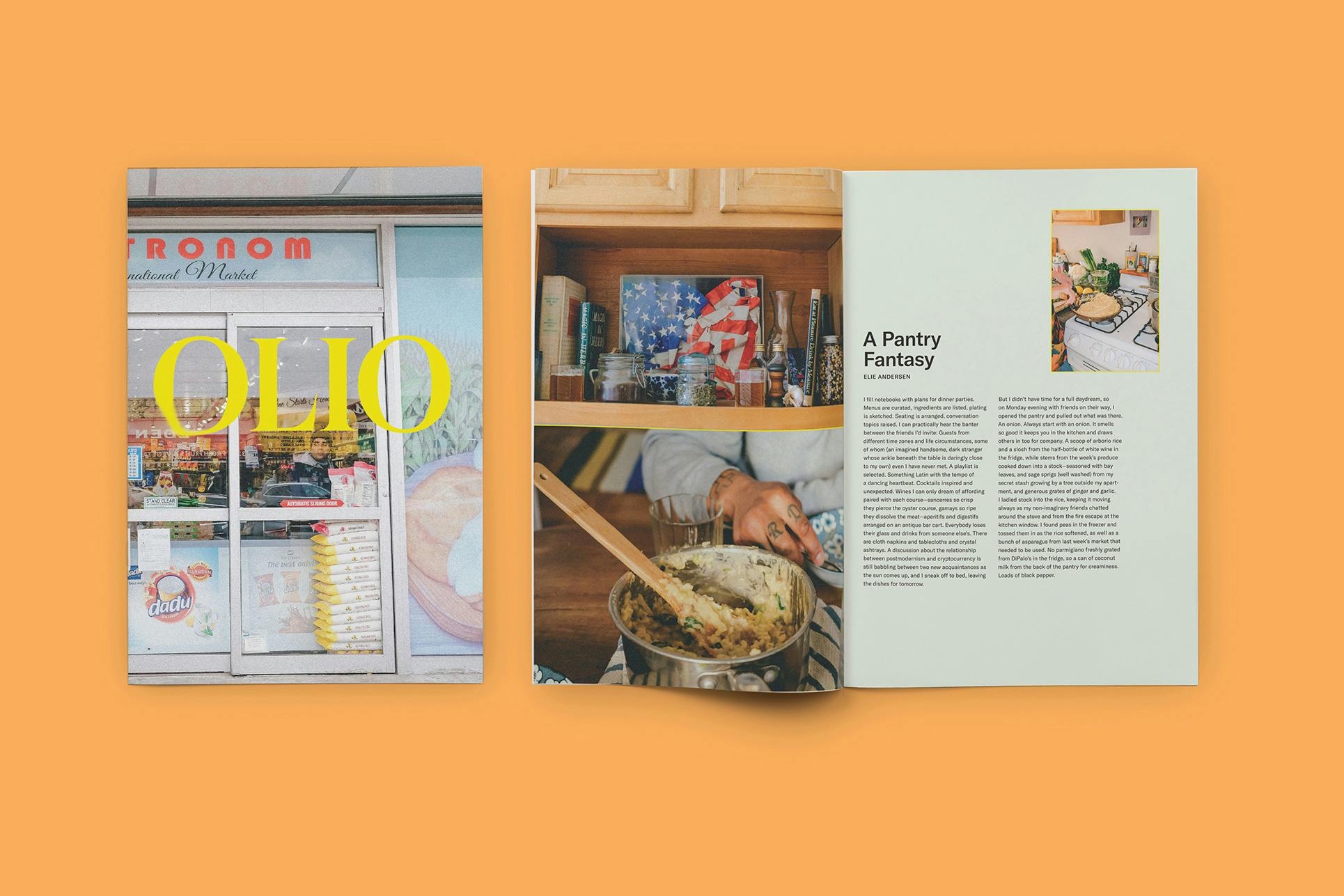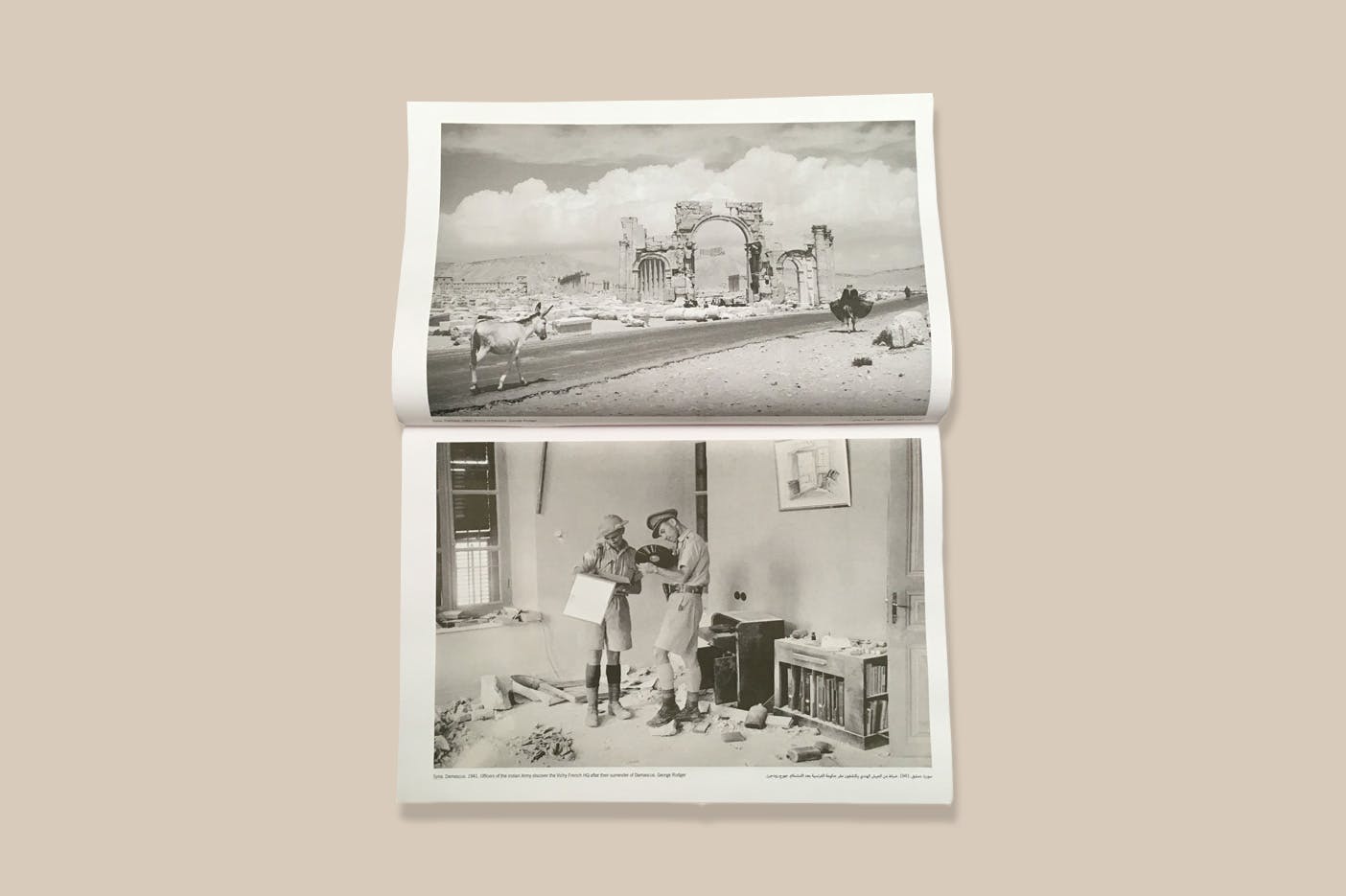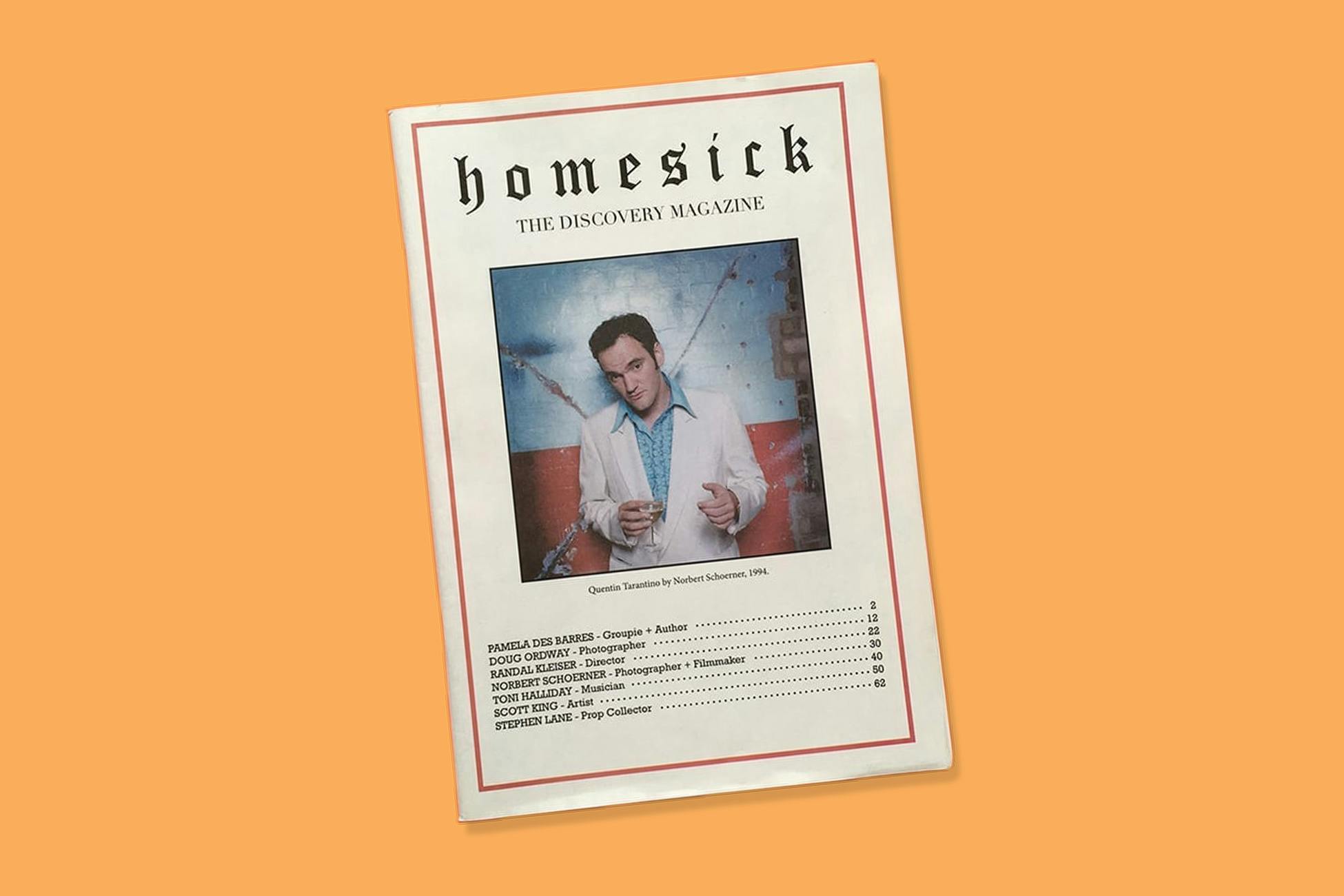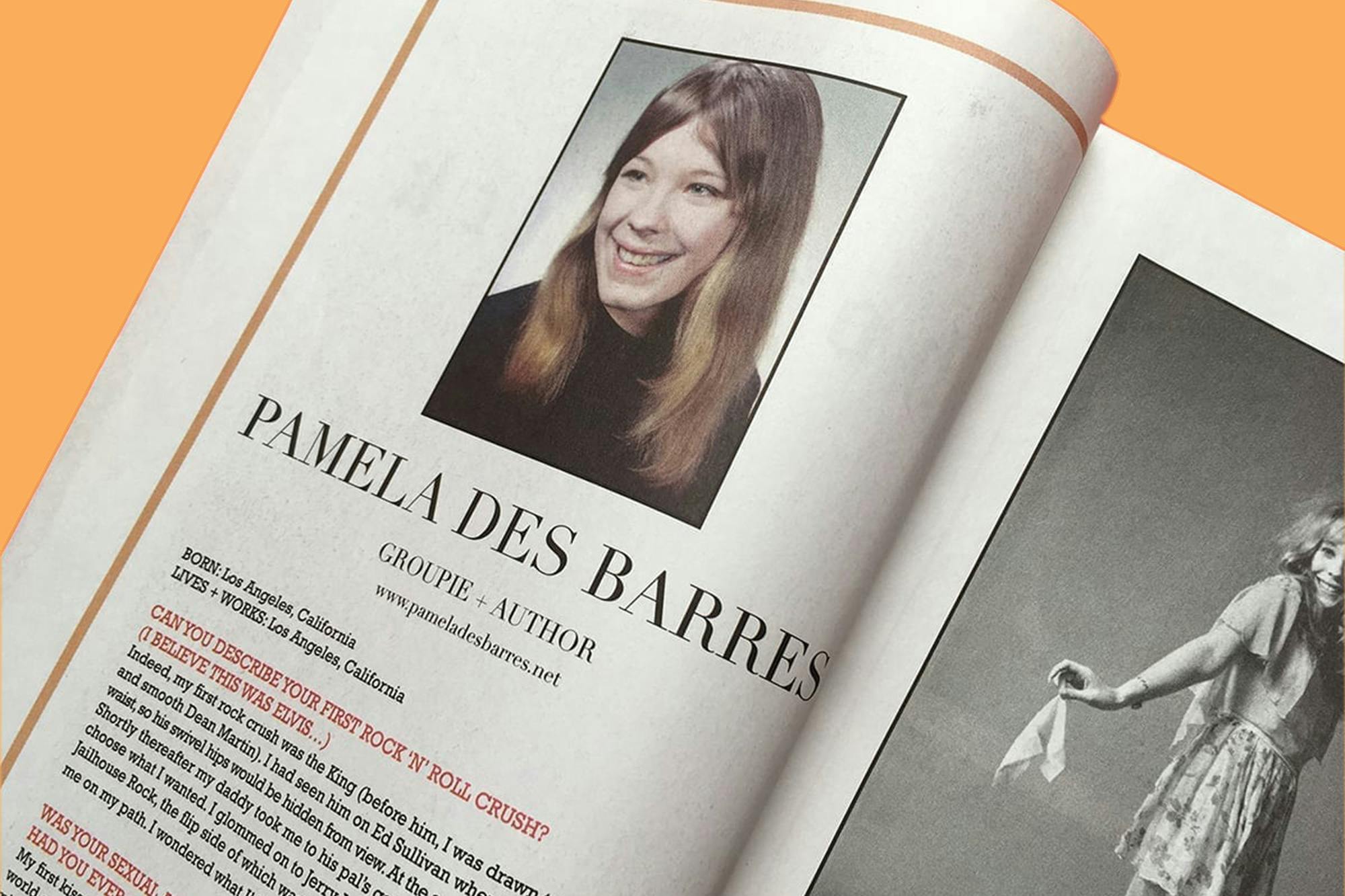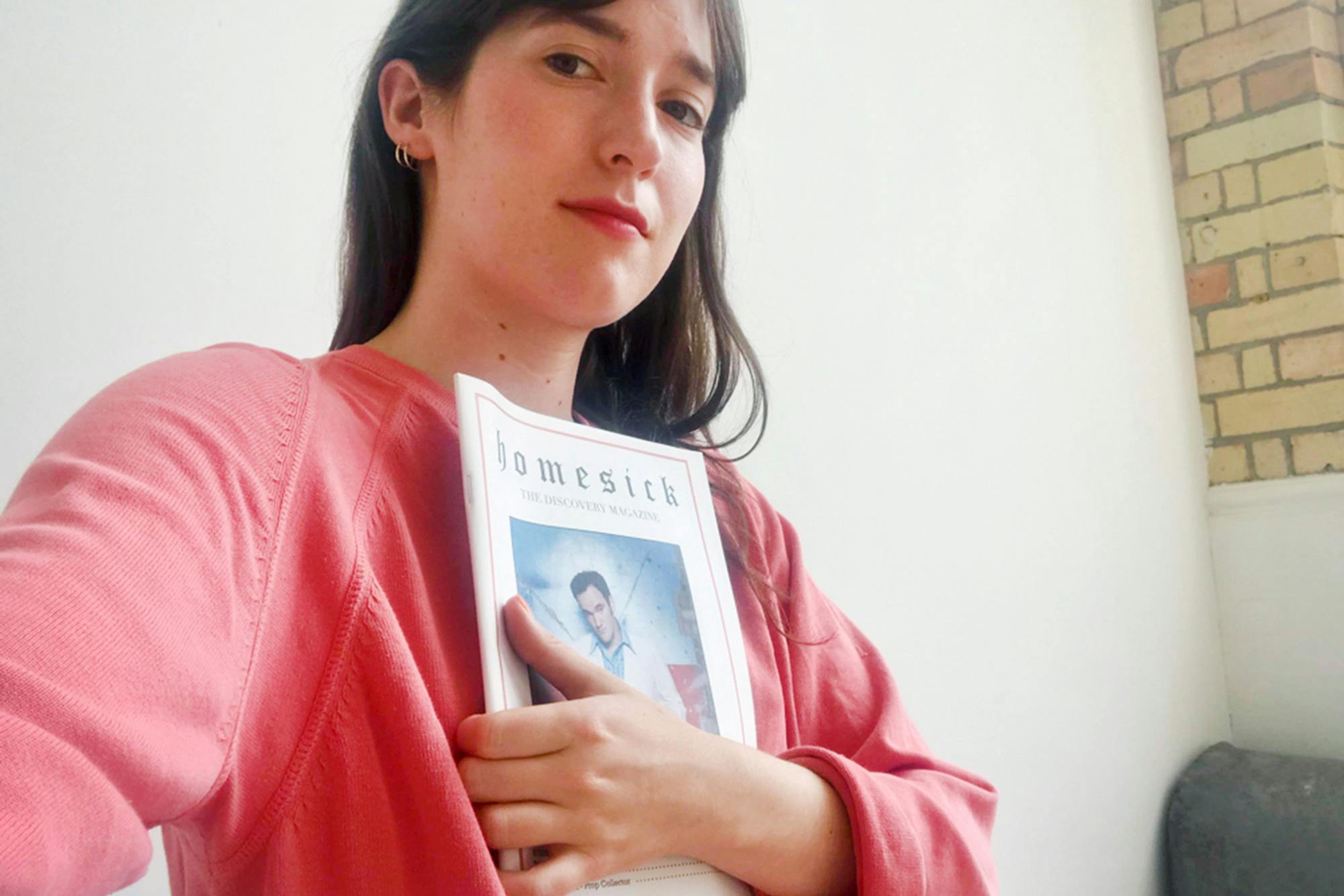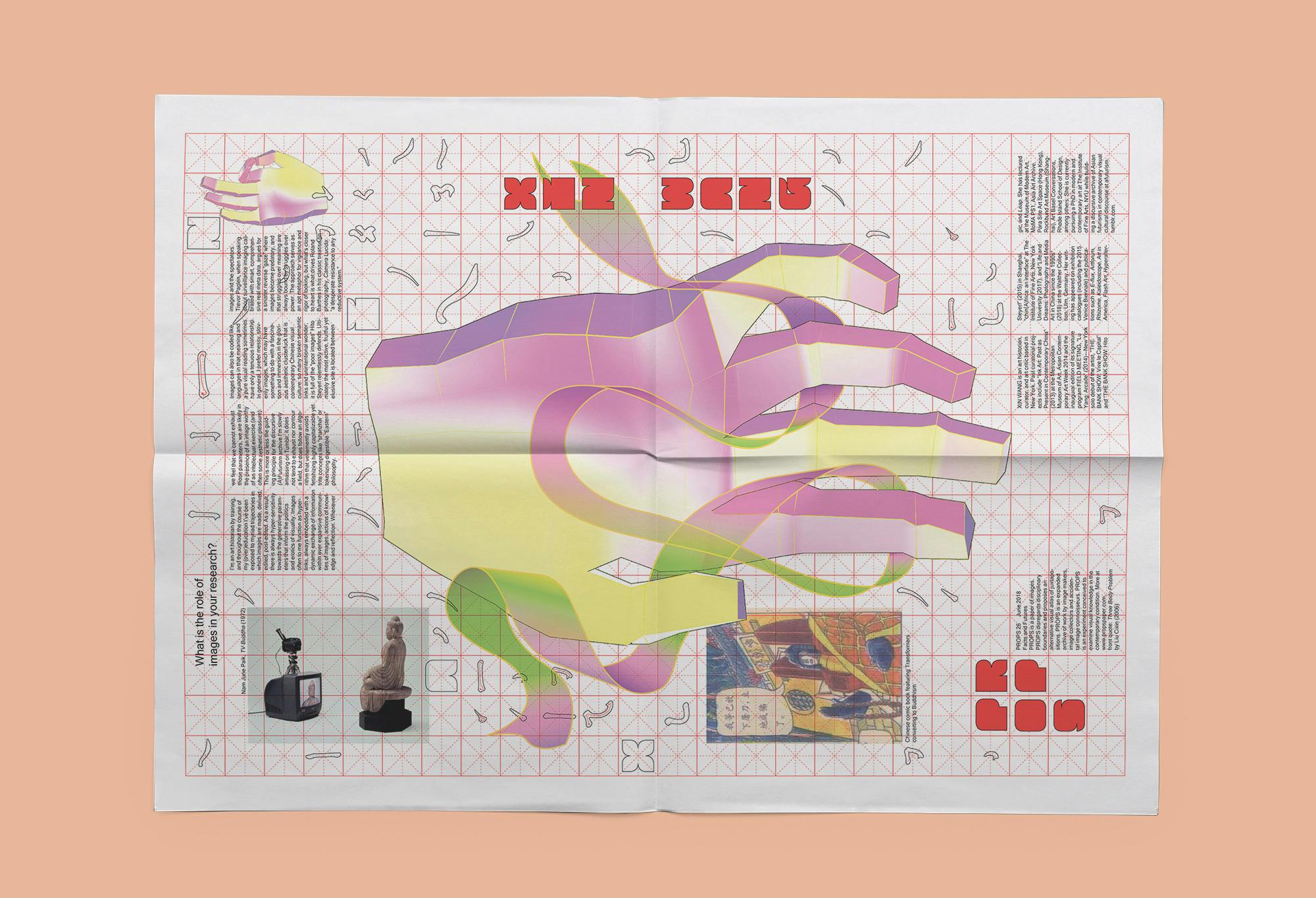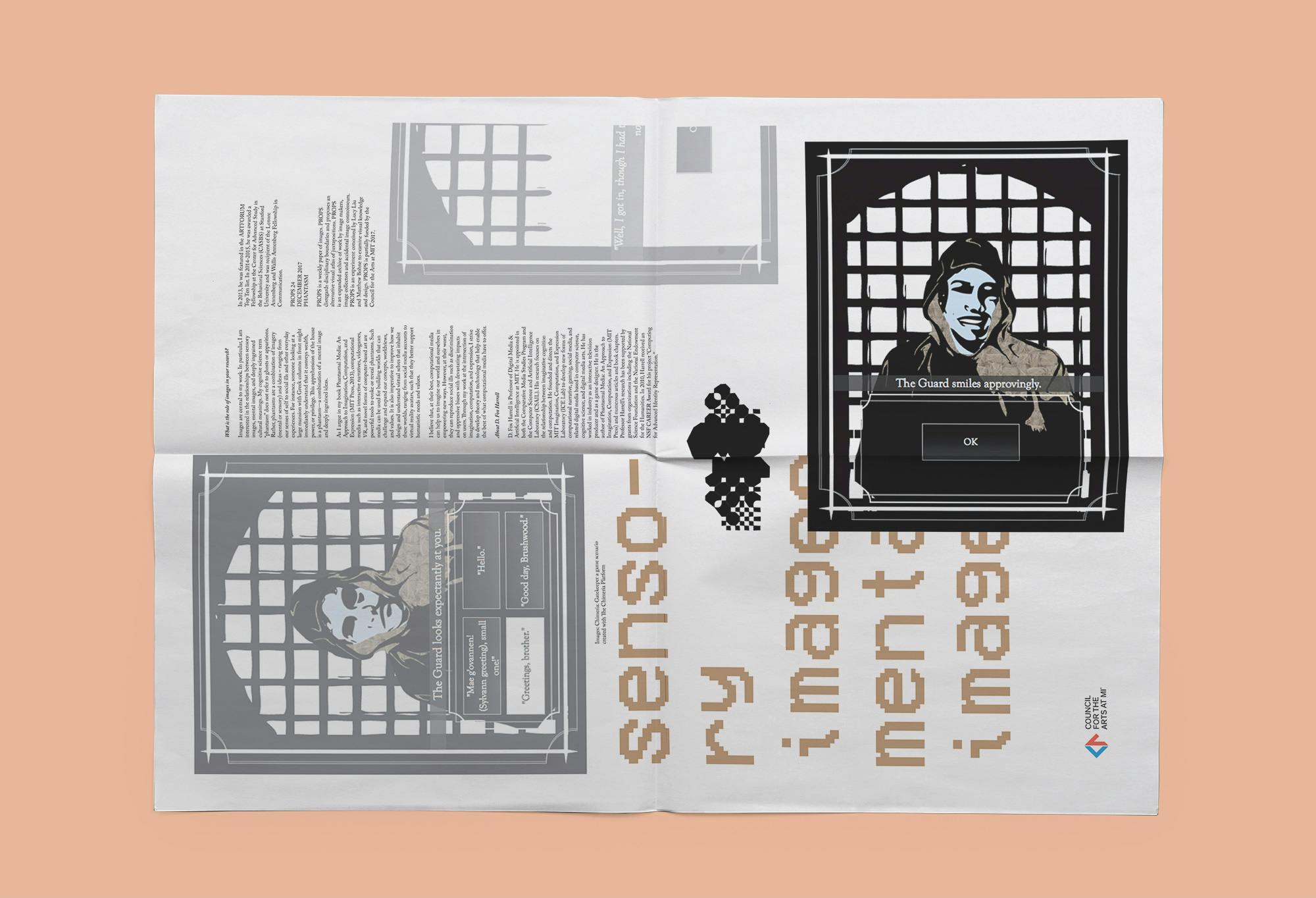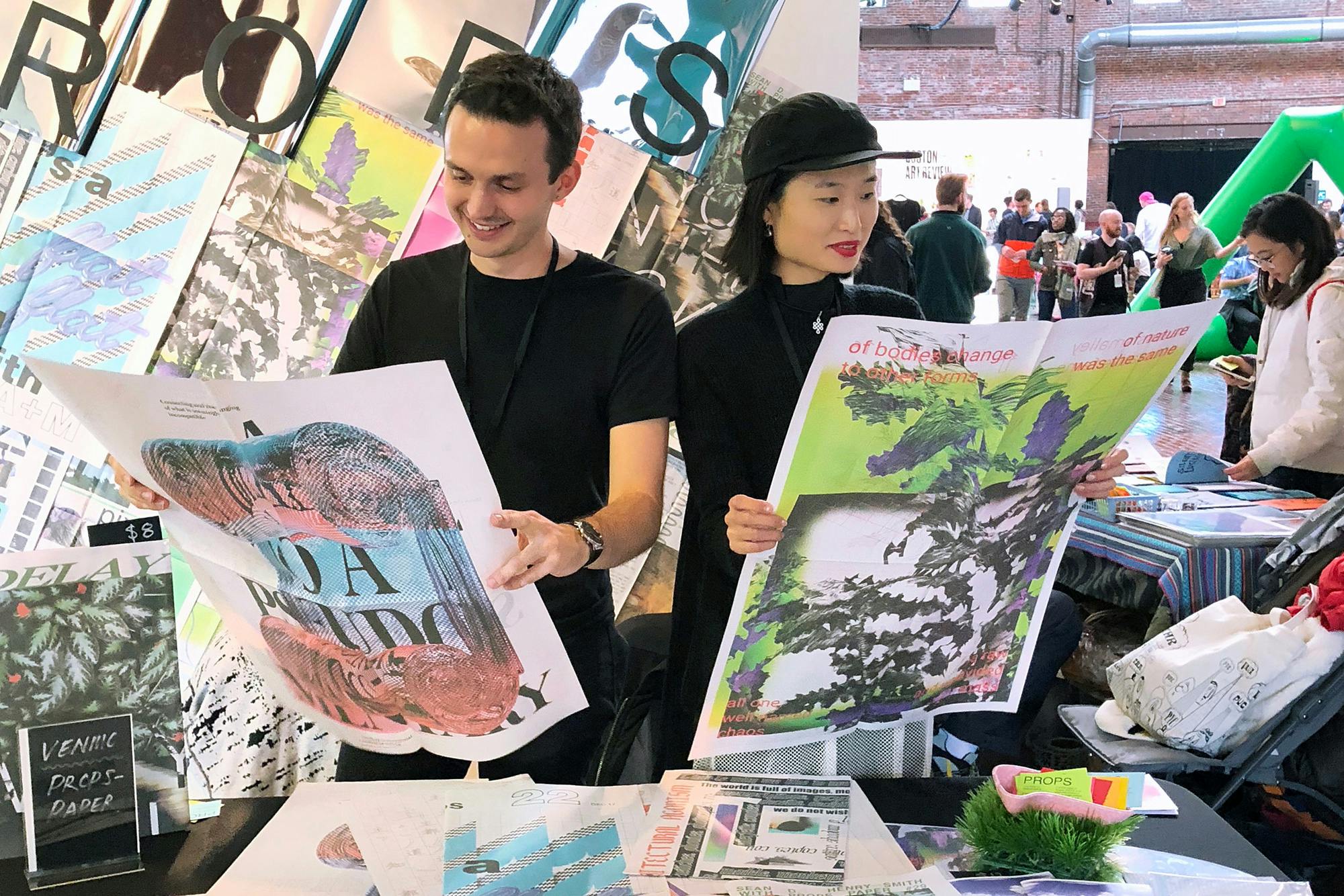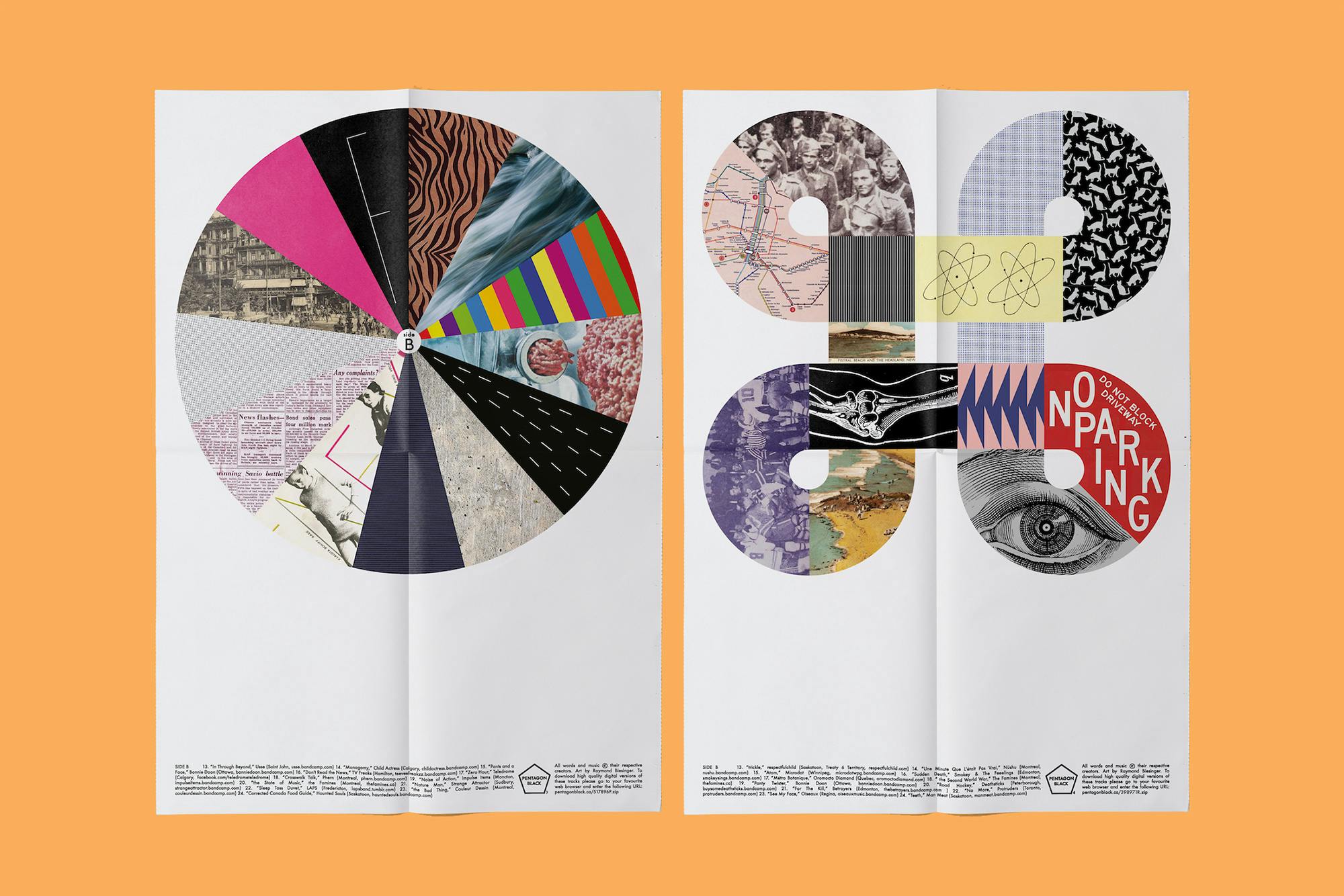10 of this year’s most exciting newsprint projects
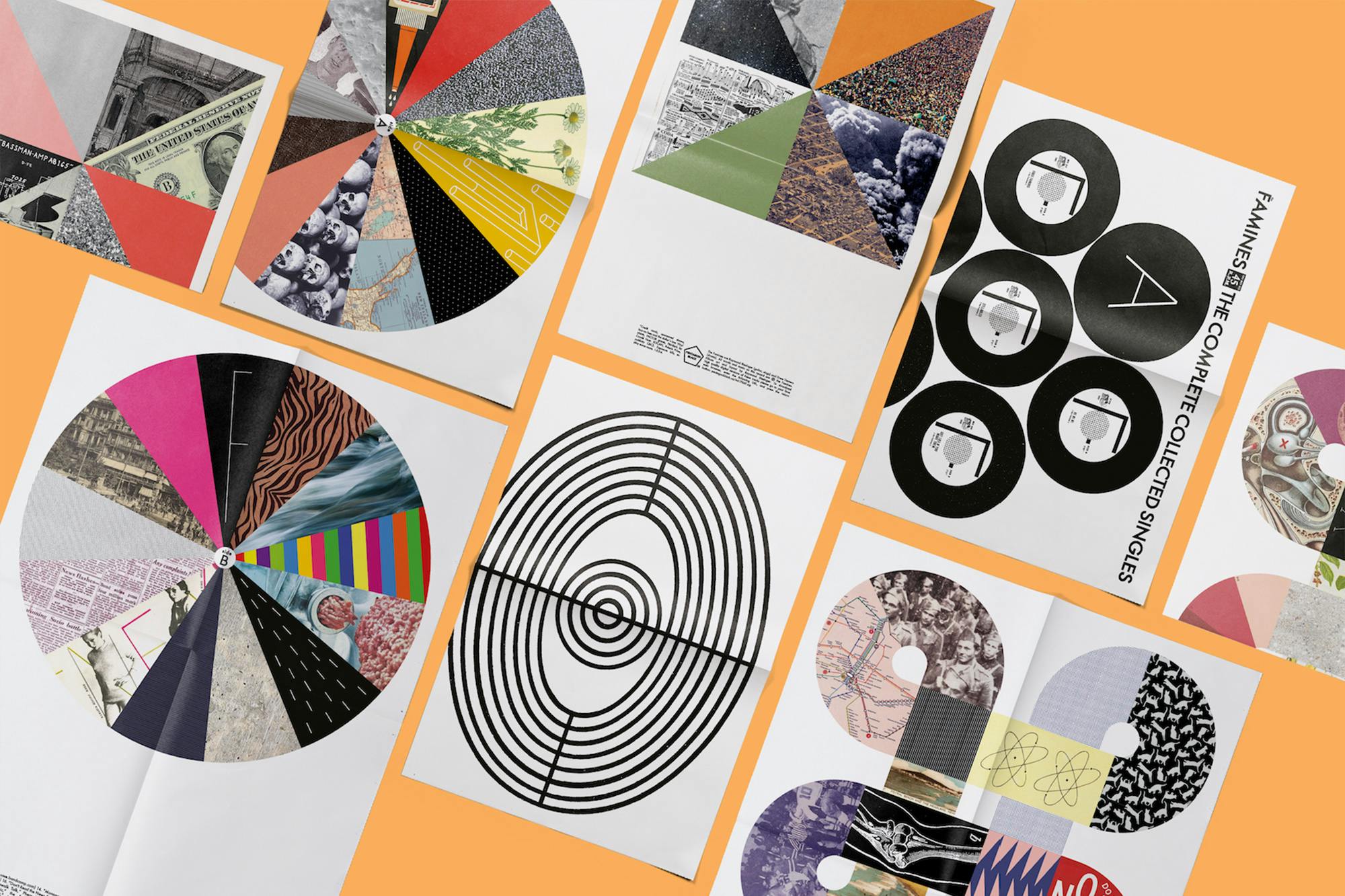
Newsprint is having a bit of a moment. There’s no coincidence that Richard Turley turned to newspapers for two of his most recent projects, Good Trouble and Civilization; both are printed on massive broadsheet pages that give the titles immediate physical impact, and newsprint also brings an “odd tension” to the reading experience. Speaking with Good Trouble editor Rod Stanley for It’s Nice That, he explains:
“We talked a bit when we started making it about this odd tension in using newsprint, which up until recently was a medium associated with fast news and information distribution. Clearly that’s been superseded, so newsprint now has a new sense of permanence to it, which makes it feel quite alien.”
Strangely anachronistic but totally of the moment, newsprint also has the major advantage of being quicker and cheaper than most other printing techniques, and thanks to companies like Newspaper Club it’s also more accessible than ever before. Their online service lets you print virtually any number of your own newspapers and magazines in either broadsheet, tabloid or mini format, and the technology continues to improve – their new digital printing now gives even better quality, with richer colours, clearer photography and less show through.
They’re literally surrounded by exciting and innovative newsprint, so we asked them to recommend 10 of the most interesting things they’ve seen over the last year. From straight up newspapers to editorialised posters and “paper LPs”, scroll on for a selection of great independent newsprint…
Olio
New York City-based creatives Elie Andersen and Ali Francis launched their supper club Olio this summer. After the meal, guests take home a mini newspaper of the same name filled with photography and stories focused on unpretentious, and mostly homemade, food.
The pair compare putting the publication together to rummaging through the pantry for impromptu ingredients — a fun, informal rebuke to the kinds of polished food magazines normally found on the newsstand. “Olio is a rejection of both print and food as spaces for the elite,” says Andersen. “That’s why we chose newsprint — it feels accessible and egalitarian.”
Magnum Chronicles
Magnum is renowned for producing lavish coffee table books, but earlier this year the 71-year-old photo agency tried something more accessible. Magnum Chronicles is a free newspaper series that uses photos from Magnum’s vast archive to explore current political and social events.
A Brief Visual History in the Time of ISIS is the first issue in the series, published as a mini newspaper and sent to Stack subscribers as part of the monthly delivery in May 2018. It features over 40 images, curated by award-winning photographer Peter van Agtmael, reflecting on the rise and fall of ISIS.
“History and how we interpret it is constantly in flux, but there are moments that demand thoughtful reflection without expectation of definitiveness,” van Agtmael writes in his editor’s letter. “Magnum Chronicles allows us to react to critical issues with a timeliness that is difficult in a full-length book.”
Homesick
Using archival images you probably won’t find online, Homesick reveals the little-known creatives behind iconic moments in pop culture. Editor Reagan Clare interviews photographers, film directors, fashion designers and musicians, illustrating each Q&A with scanned analogue materials. (One highlight from the first issue: director Walter Stern’s storyboards for a David Bowie music video.)
“Newsprint brings some urgency and credit to the whole thing,” says Clare, who looked to old gossip mags like Ritz for inspiration. “I wanted the magazine to be free and accessible and this format was a great way to get something out there quickly.”
Props
Frustrated by the limited scope (and drawn out publishing process) of most academic journals, architecture graduates Lucy Siyao Liu and Matthew Bohne launched Props in 2016 as a weekly print experiment. Over 30 issues later and the project has become an expansive exploration of visual design across disciplines, a reflection of what they describe as the “ad-hoc nature of contemporary practices that slip between categories.”
Each issue is a single sheet of newsprint – Liu and Bohne create a design for the cover with the inside spread featuring work from contributors who range from poets to lawyers to astrophysicists.
“Newsprint communicates the frequency, expediency, and ephemerality of the project,” explains Liu. “To encounter Props, untethered from the censorship of algorithms, is to participate in an unfiltered dialogue.”
Extra Point
Launched in September, Extra Point invites artists and designers to respond to a sports-related prompt. The first issue is themed around the 24-second basketball shot clock and the range of contributions – from illustrated trading cards to collaged landscape photographs – shows the very different ways people can relate to the same game.
Founders Mitchell Barton and Christian Santiago say the newspaper format gives the publication a unique structure – we love the pull-out poster, below, created by New Orleans-based artist Ashley Teamer, which doubles as a Snakes N’ Ladders-style game board.

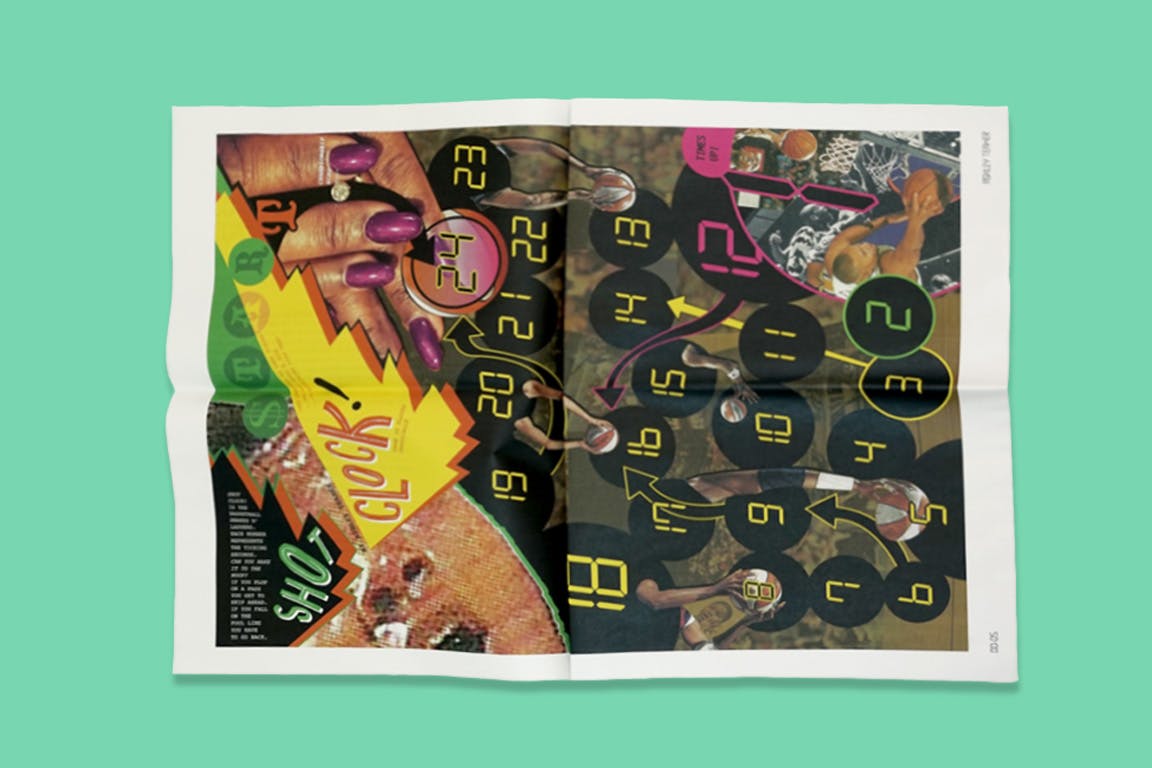
Actual Rubbish
Remixing real newspaper headlines from 2018, Actual Rubbish considers how we separate truth from fiction in an increasingly unbelievable news cycle. Minneapolis-based artist Doug Pedersen presents headlines like “Experimental tweet writer breaks silence on digital twin” in typographic collages designed to reflect the chaotic pace of information today.
Sales of Actual Rubbish benefit the Freedom of the Press Foundation, a nonprofit that protects public-interest journalism. “Hopefully, no matter how bizarre the truth gets,” says Pederson, “we’ll still have journalists out there with the freedom to cover it.”
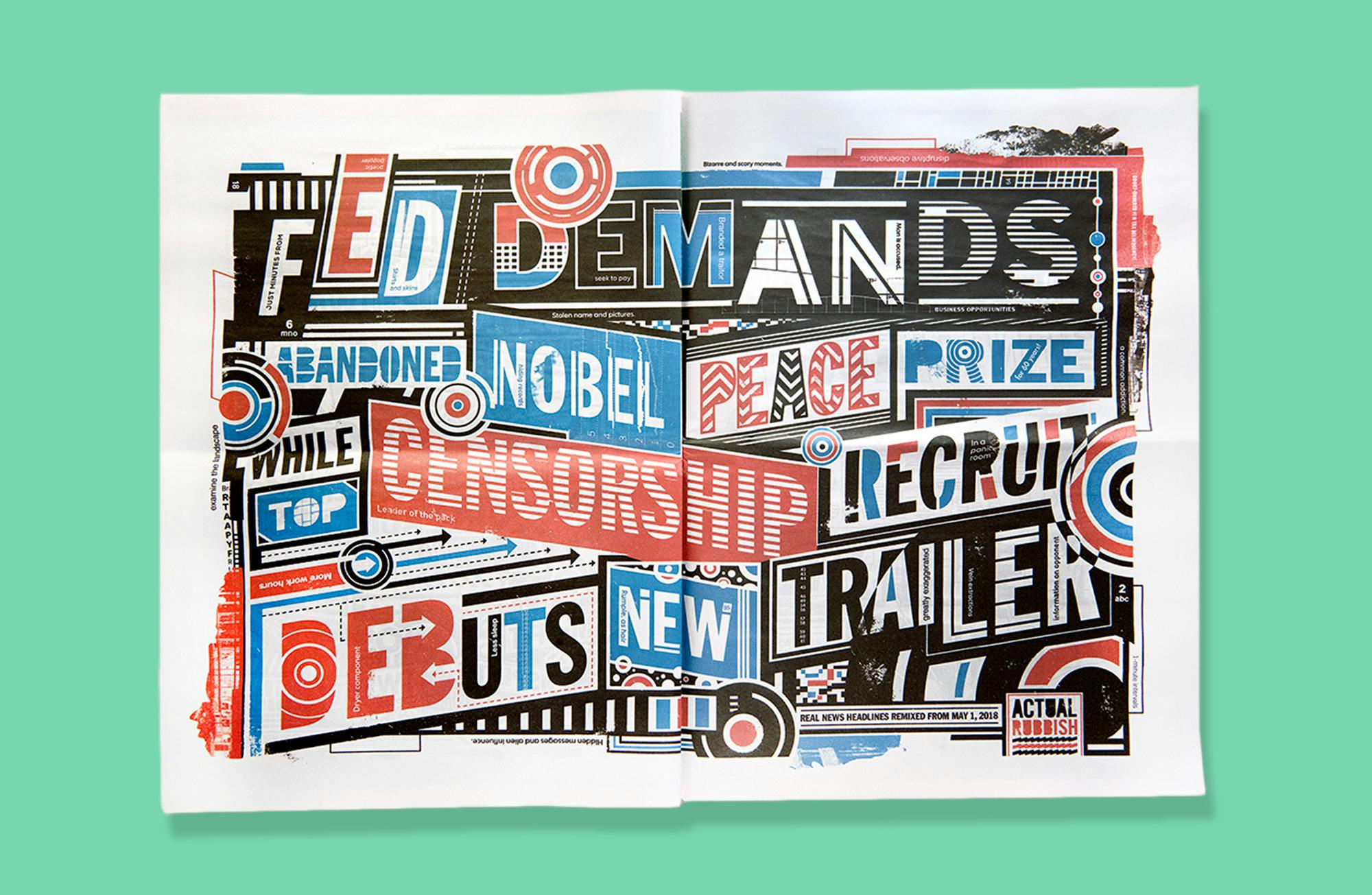

Strong Words
Strong Words is a new magazine that celebrates new books. Launched this year by Ed Needham (previously editor of FHM, Rolling Stone and Maxim) the publication only features titles the reviewer would genuinely recommend. “Everything that appears in Strong Words is covered with enthusiasm,” says Needham.
For its first few issues, Strong Words was published as a tabloid newspaper, a format that allowed them to showcase their content and build an audience with a lower overhead. They’ve now moved to a premium, perfect-bound format but are using leftover newspapers as free samples for potential subscribers.
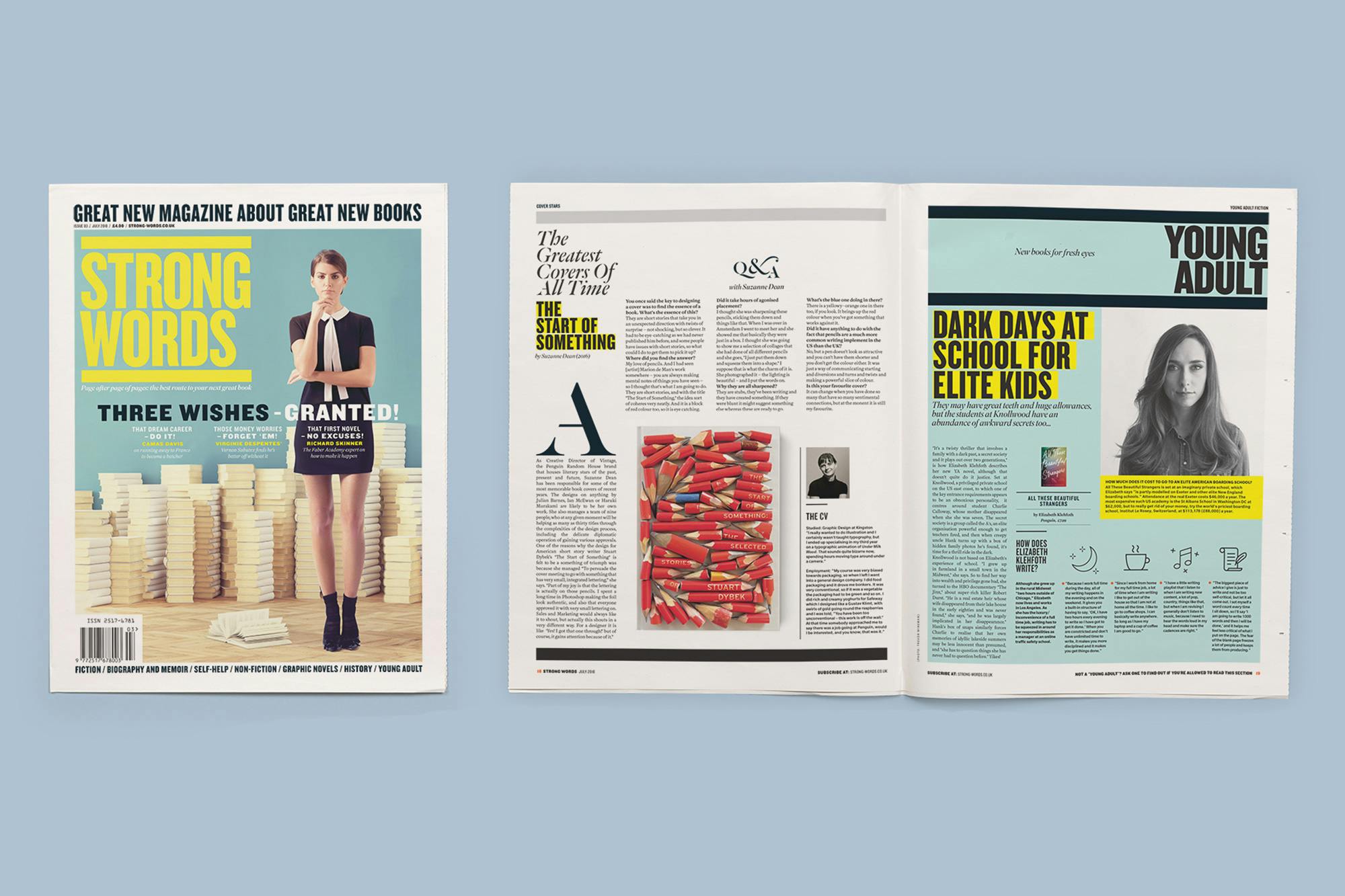
Hands
When we started Newspaper Club we hoped it might lead to new local newspapers getting off the ground, so it’s been great to watch Brooklyn’s Hands evolve over the past year.
Founders Chelsea Trout and Arpan Somani crowdsourced funding for the free newspaper, and have been learning the ropes of publishing on the fly – neither had used layout software before launching in March. Since then, they’ve built templates to streamline the design process and created a style guide for decisions like whether to use an em dash or a colon. (That one was easy: “We’re em dash people,” says Trout.)
With a current distribution of 200 copies per month, they say it’s been a matter of trial and error to find the right stockists and meet new contributors, “but with every issue, we’re getting closer to an identity.”
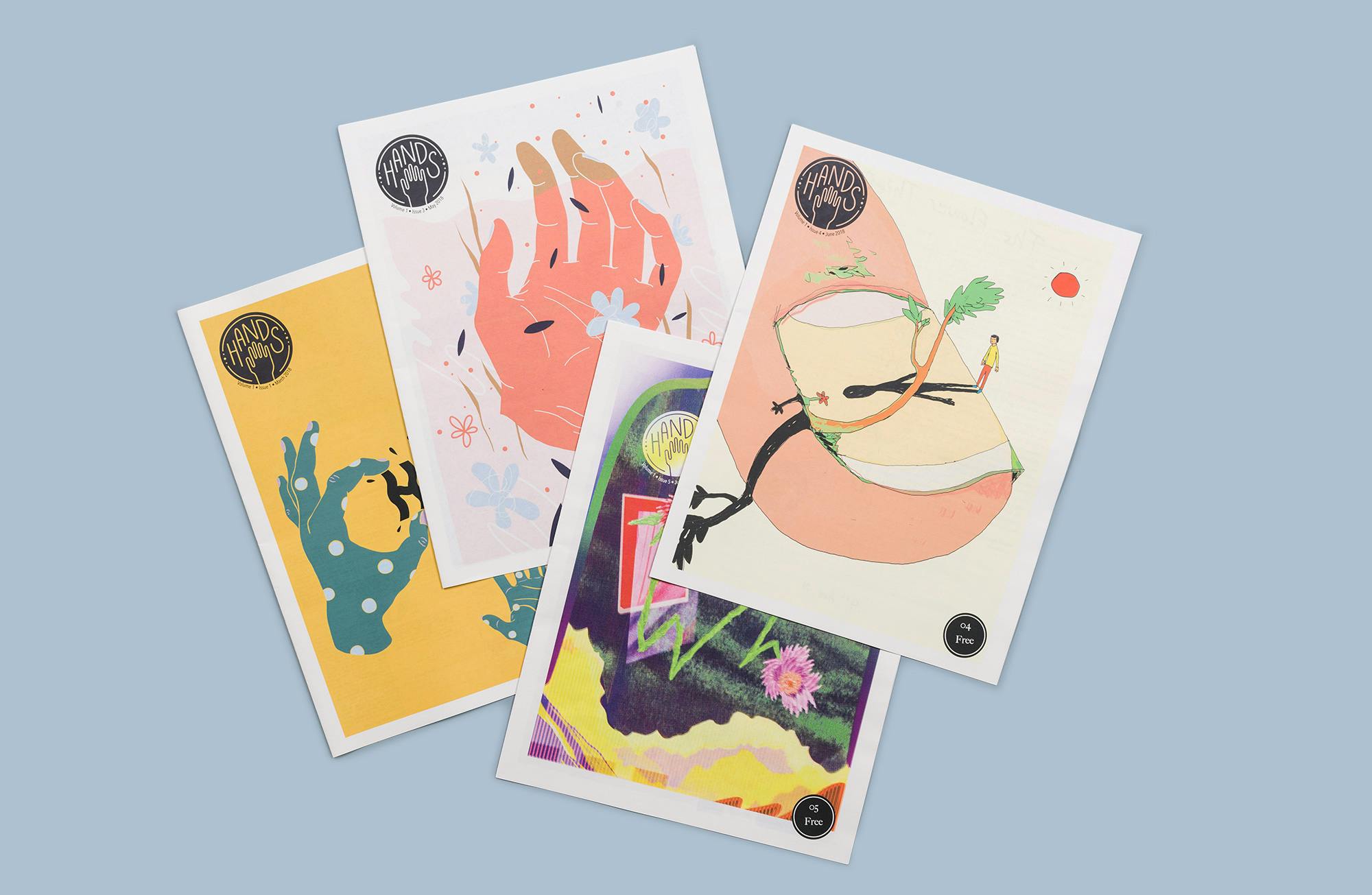

Pinches
Pinches is a quarterly publication for Altatto, a creative catering service in Milan. Designer Alessandro Brunetti added an extra vertical fold to mini newspapers by hand, creating an unusually narrow format (reminiscent of Stack Awards winner Real Review!) that can be read folded or unfolded. Similar to Olio above, Pinches serves as an additional tactile element to explore food beyond the plate.

The Famines
Side-stepping the expenses of pressing vinyl, Canadian band The Famines release new tracks on “paper LPs” – beautifully illustrated posters, printed on broadsheets, with a code to download the music. The artwork is created by frontman Raymond Biesinger who, by day, creates illustrations for likes of The New York Times, Wired and Monocle.
“It’s just gotten rid of so much of the risk of being in a band,” Biesinger told Vice last year. “It might be weird to some purists, [but] it’s given us a new life.”
Create your own piece of of newsprint – request a free sample from Newspaper Club to see what you could make…
